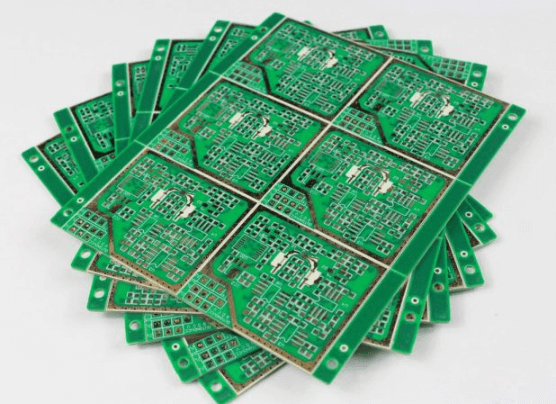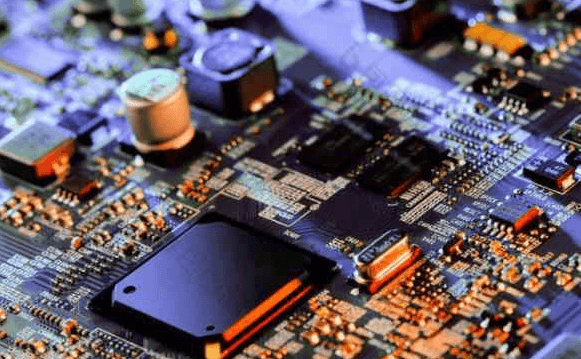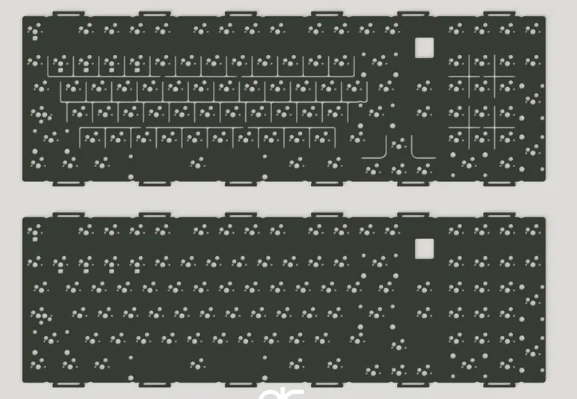Pcb pollution
Causes Of PCB Pollution
Polychlorinated biphenyls (PCBs) are synthetic organic chemicals that have been widely used in various industrial and commercial applications due to their non-flammability, chemical stability, and insulating properties. However, the production and use of PCBs have led to significant environmental pollution, posing serious risks to human health and ecosystems. Understanding the causes of PCB pollution is crucial for developing effective strategies to mitigate its impact.
One of the primary causes of PCB pollution is the extensive use of these chemicals in electrical equipment such as transformers, capacitors, and voltage regulators
PCBs were favored in these applications because of their excellent insulating properties and resistance to heat. Over time, however, these electrical devices can leak or break down, releasing PCBs into the environment. Additionally, improper disposal of PCB-containing equipment can lead to contamination of soil and water sources.
Another significant source of PCB pollution is the manufacturing process itself.
During the production of PCBs, waste materials and by-products can be released into the environment if not properly managed. Factories that produced PCBs or used them in the manufacturing of other products often discharged PCB-laden waste into nearby water bodies or disposed of it in landfills. These practices have resulted in long-term contamination of soil and water, as PCBs are highly persistent and do not easily degrade.
Moreover, PCBs have been used in a variety of other applications, including hydraulic fluids, lubricants, plasticizers, and adhesives.
The widespread use of PCBs in these products has contributed to their release into the environment through spills, leaks, and improper disposal. For instance, hydraulic systems in industrial machinery can leak PCBs, contaminating the surrounding area. Similarly, products containing PCBs that are discarded in landfills can leach these chemicals into the soil and groundwater.
In addition to direct sources of PCB pollution, there are also secondary pathways through which these chemicals can spread.
Atmospheric deposition is one such pathway, where PCBs can volatilize into the air from contaminated sites and then be transported over long distances before settling back onto land or water surfaces. This process can lead to widespread contamination, even in areas far removed from the original source of pollution. Furthermore, PCBs can bioaccumulate in the food chain, posing risks to wildlife and humans who consume contaminated fish, meat, or dairy products.
The legacy of PCB pollution is also exacerbated by historical practices that are no longer in use but have left a lasting impact.
For example, dredging activities in contaminated water bodies can resuspend PCBs that have settled in sediments, reintroducing them into the water column and making them more available for uptake by aquatic organisms. Similarly, old buildings and infrastructure that contain PCB-laden materials can continue to release these chemicals into the environment as they deteriorate.
In conclusion, the causes of PCB pollution are multifaceted and stem from both historical and ongoing sources. The extensive use of PCBs in electrical equipment, industrial processes, and various commercial products has led to widespread environmental contamination. Improper disposal practices, atmospheric deposition, and bioaccumulation further contribute to the persistence and spread of PCBs. Addressing PCB pollution requires a comprehensive understanding of these causes and the implementation of effective measures to prevent further contamination and mitigate existing pollution.

Health Impacts Of PCB Exposure
Polychlorinated biphenyls (PCBs) are a group of man-made organic chemicals that have been widely used in various industrial and commercial applications due to their non-flammability, chemical stability, and insulating properties. However, despite their beneficial uses, PCBs have been identified as persistent environmental pollutants with significant adverse health impacts. Exposure to PCBs can occur through various pathways, including ingestion of contaminated food, inhalation of polluted air, and dermal contact with contaminated soil or water. The health impacts of PCB exposure are profound and multifaceted, affecting multiple organ systems and posing serious risks to human health.
One of the primary health concerns associated with PCB exposure is its potential to cause cancer.
The International Agency for Research on Cancer (IARC) has classified PCBs as probable human carcinogens. Studies have shown that prolonged exposure to PCBs can lead to an increased risk of developing various types of cancer, including liver, kidney, and skin cancers. The carcinogenic potential of PCBs is attributed to their ability to induce oxidative stress, disrupt cellular processes, and cause DNA damage, which can ultimately lead to malignant transformations.
In addition to their carcinogenic effects, PCBs are known to have detrimental impacts on the endocrine system.
PCBs can mimic or interfere with the action of hormones, leading to endocrine disruption. This disruption can result in a wide range of health issues, including reproductive disorders, developmental abnormalities, and metabolic dysfunctions. For instance, exposure to PCBs during pregnancy has been linked to adverse outcomes such as low birth weight, preterm birth, and developmental delays in children. Furthermore, PCBs can affect thyroid hormone levels, which are crucial for regulating metabolism and growth, thereby contributing to metabolic disorders and impaired growth and development.
Neurological effects are another significant concern related to PCB exposure.
PCBs can cross the blood-brain barrier and accumulate in the brain, where they can exert neurotoxic effects. Research has demonstrated that exposure to PCBs, particularly during critical periods of brain development, can lead to cognitive deficits, behavioral problems, and impaired motor skills. Children are especially vulnerable to these effects, as their developing nervous systems are more susceptible to toxic insults. Additionally, there is evidence to suggest that PCB exposure may be associated with an increased risk of neurodegenerative diseases such as Parkinson’s disease and Alzheimer’s disease in adults.
The immune system is also a target of PCB toxicity. PCBs have been shown to modulate immune function, leading to immunosuppression or immune dysregulation.
This can result in an increased susceptibility to infections, reduced vaccine efficacy, and a higher risk of autoimmune diseases. The immunotoxic effects of PCBs are particularly concerning for vulnerable populations such as infants, the elderly, and individuals with pre-existing health conditions.
Moreover, PCBs can have adverse effects on the cardiovascular system.
Studies have indicated that PCB exposure is associated with an increased risk of cardiovascular diseases, including hypertension, atherosclerosis, and coronary artery disease. The mechanisms underlying these effects may involve oxidative stress, inflammation, and disruption of lipid metabolism.
In conclusion, the health impacts of PCB exposure are extensive and multifaceted, affecting various organ systems and posing significant risks to human health. The carcinogenic, endocrine-disrupting, neurotoxic, immunotoxic, and cardiovascular effects of PCBs underscore the importance of minimizing exposure to these harmful chemicals. Public health measures, including stringent regulations, environmental monitoring, and education on safe practices, are essential to mitigate the risks associated with PCB pollution and protect human health.

Methods For PCB Contamination Cleanup
Polychlorinated biphenyls (PCBs) are synthetic organic chemicals that have been widely used in various industrial applications due to their non-flammability, chemical stability, and insulating properties. However, their persistence in the environment and potential to cause adverse health effects have led to significant concerns regarding PCB contamination. Consequently, effective methods for PCB contamination cleanup are essential to mitigate their impact on ecosystems and human health.
One of the primary methods for PCB contamination cleanup is excavation and removal.
This approach involves physically removing contaminated soil or sediment and transporting it to a designated disposal facility. Excavation is particularly effective for sites with high concentrations of PCBs, as it ensures the complete removal of the contaminated material. However, this method can be costly and disruptive to the environment, necessitating careful planning and execution to minimize collateral damage.
In addition to excavation, thermal desorption is another widely used technique for PCB remediation.
This method involves heating contaminated soil or sediment to temperatures high enough to volatilize the PCBs, which are then captured and treated in a gas treatment system. Thermal desorption is advantageous because it can effectively reduce PCB concentrations to acceptable levels. Nevertheless, the process requires significant energy input and can generate secondary waste streams that must be managed appropriately.
Bioremediation offers a more sustainable alternative to traditional cleanup methods.
This technique leverages the natural metabolic processes of microorganisms to degrade PCBs into less harmful compounds. Bioremediation can be implemented in situ, meaning it can be applied directly to the contaminated site without the need for excavation. This method is particularly appealing due to its lower cost and reduced environmental impact. However, the effectiveness of bioremediation can be influenced by various factors, including the specific PCB congeners present, the availability of suitable microbial communities, and environmental conditions such as temperature and pH.
Phytoremediation is another innovative approach that utilizes plants to absorb, accumulate, and sometimes degrade PCBs from contaminated soil or water.
Certain plant species have shown the ability to uptake PCBs through their root systems and translocate them to above-ground tissues. While phytoremediation is generally slower than other methods, it offers a cost-effective and environmentally friendly solution for long-term remediation efforts. Additionally, the use of plants can enhance soil structure and promote biodiversity, providing ancillary ecological benefits.
Chemical dechlorination is a method that involves the use of chemical reagents to break down PCBs into less toxic compounds.
This process typically requires the addition of a reducing agent, such as sodium or magnesium, which facilitates the removal of chlorine atoms from the PCB molecules. Chemical dechlorination can be highly effective in reducing PCB concentrations, but it often necessitates careful handling of hazardous chemicals and may generate by-products that require further treatment.
Electrochemical remediation is an emerging technology that employs electric currents to induce chemical reactions that degrade PCBs.
This method can be applied in situ and has the potential to treat large volumes of contaminated material efficiently. However, the technology is still in the developmental stage, and further research is needed to optimize its application and assess its long-term effectiveness.
In conclusion, various methods for PCB contamination cleanup exist, each with its own advantages and limitations. The choice of remediation technique depends on factors such as the extent of contamination, site characteristics, and available resources. A comprehensive approach that integrates multiple methods may often be necessary to achieve effective and sustainable PCB remediation. As research continues to advance, new and improved technologies will likely emerge, offering enhanced solutions for addressing the persistent challenge of PCB pollution.

Regulations And Policies On PCB Disposal
Polychlorinated biphenyls (PCBs) are synthetic organic chemicals that have been widely used in various industrial applications due to their non-flammability, chemical stability, and insulating properties. However, the environmental and health hazards associated with PCBs have led to stringent regulations and policies governing their disposal. Understanding these regulations is crucial for ensuring compliance and protecting both human health and the environment.
The regulatory framework for PCB disposal is primarily shaped by international agreements and national laws.
One of the most significant international treaties addressing PCB pollution is the Stockholm Convention on Persistent Organic Pollutants (POPs), which aims to eliminate or restrict the production and use of persistent organic pollutants, including PCBs. Under this convention, signatory countries are obligated to take measures to reduce or eliminate the release of PCBs into the environment. This includes the safe disposal of PCB-containing equipment and waste.
In the United States, the Toxic Substances Control Act (TSCA) provides the legal basis for regulating PCBs.
The Environmental Protection Agency (EPA) is responsible for enforcing TSCA regulations, which include specific requirements for the disposal of PCB-containing materials. According to the EPA, PCBs must be disposed of in a manner that minimizes the risk of environmental contamination. This often involves incineration at high temperatures in approved facilities, which can effectively break down the chemical structure of PCBs, rendering them harmless. Alternatively, PCBs can be disposed of in specially designed landfills that prevent leaching into the surrounding soil and groundwater.
Transitioning to the European Union, the regulation of PCBs is governed by the Waste Framework Directive and the Regulation on Persistent Organic Pollutants.
These regulations mandate that member states take appropriate measures to ensure the environmentally sound management of PCB waste. This includes the identification, labeling, and safe disposal of PCB-containing equipment. Additionally, the European Union has set specific deadlines for the phase-out and disposal of PCBs, reflecting a commitment to reducing environmental pollution.
In Canada, the Canadian Environmental Protection Act (CEPA) regulates the management of PCBs.
Under CEPA, the disposal of PCBs is strictly controlled, and facilities handling PCB waste must adhere to stringent operational standards. The Canadian government has also established a national inventory of PCB-containing equipment to facilitate monitoring and compliance efforts.
Despite these comprehensive regulations, challenges remain in the effective disposal of PCBs.
One significant issue is the identification and tracking of PCB-containing equipment, particularly in older infrastructure where records may be incomplete or non-existent. Moreover, the high costs associated with the safe disposal of PCBs can be a barrier for some entities, leading to improper disposal practices that pose significant environmental risks.
To address these challenges, ongoing efforts are needed to enhance regulatory frameworks and enforcement mechanisms.
This includes increasing public awareness about the dangers of PCBs and the importance of proper disposal. Additionally, advancements in disposal technologies can help reduce costs and improve the efficiency of PCB destruction processes.
In conclusion, the regulation and disposal of PCBs are governed by a complex web of international treaties and national laws designed to mitigate the environmental and health risks associated with these hazardous chemicals. While significant progress has been made, continued vigilance and innovation are essential to ensure that PCB pollution is effectively managed and ultimately eliminated.

Environmental Effects Of PCB Pollution
Polychlorinated biphenyls (PCBs) are synthetic organic chemicals that have been widely used in various industrial applications due to their non-flammability, chemical stability, and insulating properties. However, the environmental effects of PCB pollution have become a significant concern due to their persistence in the environment and their potential to cause adverse health effects in both wildlife and humans. PCBs can enter the environment through various pathways, including improper disposal, leaks from electrical equipment, and atmospheric deposition. Once released, they can persist for long periods, accumulating in soil, water, and living organisms.
One of the primary environmental effects of PCB pollution is its impact on aquatic ecosystems.
PCBs can enter water bodies through runoff, atmospheric deposition, and direct discharge from industrial sources. In aquatic environments, PCBs tend to bind to sediments, where they can remain for years, posing a long-term threat to aquatic life.
Fish and other aquatic organisms can absorb PCBs from contaminated water and sediments, leading to bioaccumulation. As these contaminants move up the food chain, they become more concentrated in the tissues of predatory species, a process known as biomagnification. This can result in high PCB levels in top predators, such as fish-eating birds and mammals, which can suffer from reproductive, immunological, and neurological impairments.
Moreover, PCB pollution can have detrimental effects on terrestrial ecosystems.
PCBs can be transported through the atmosphere and deposited on land, where they can contaminate soil and vegetation. Terrestrial animals, including birds and mammals, can be exposed to PCBs through their diet, leading to bioaccumulation and biomagnification similar to that observed in aquatic systems.
Studies have shown that PCB exposure can cause a range of adverse effects in terrestrial wildlife, including developmental abnormalities, reproductive failure, and increased susceptibility to disease. These impacts can have cascading effects on ecosystem health and biodiversity, as the decline of certain species can disrupt food webs and ecological balance.
In addition to their ecological impacts, PCBs pose significant risks to human health. Humans can be exposed to PCBs through the consumption of contaminated food, particularly fish and other animal products, as well as through inhalation and dermal contact. Once in the human body, PCBs can accumulate in fatty tissues and persist for long periods. Chronic exposure to PCBs has been linked to a variety of health problems, including cancer, immune system suppression, and endocrine disruption. Furthermore, PCBs can cross the placenta and accumulate in breast milk, posing a risk to developing fetuses and infants. This highlights the importance of addressing PCB pollution to protect public health.
Efforts to mitigate the environmental effects of PCB pollution have included regulatory measures to limit their production and use, as well as initiatives to clean up contaminated sites. The Stockholm Convention on Persistent Organic Pollutants, an international treaty, aims to eliminate or restrict the production and use of PCBs and other hazardous chemicals. Additionally, various countries have implemented national regulations to manage PCB-containing equipment and waste. Remediation efforts, such as dredging contaminated sediments and treating polluted soils, are also critical in reducing PCB levels in the environment.
In conclusion, PCB pollution presents a significant environmental challenge due to its persistence, bioaccumulation, and potential to cause harm to both wildlife and humans. Addressing this issue requires a combination of regulatory measures, remediation efforts, and ongoing monitoring to protect ecosystems and public health from the adverse effects of PCBs.






